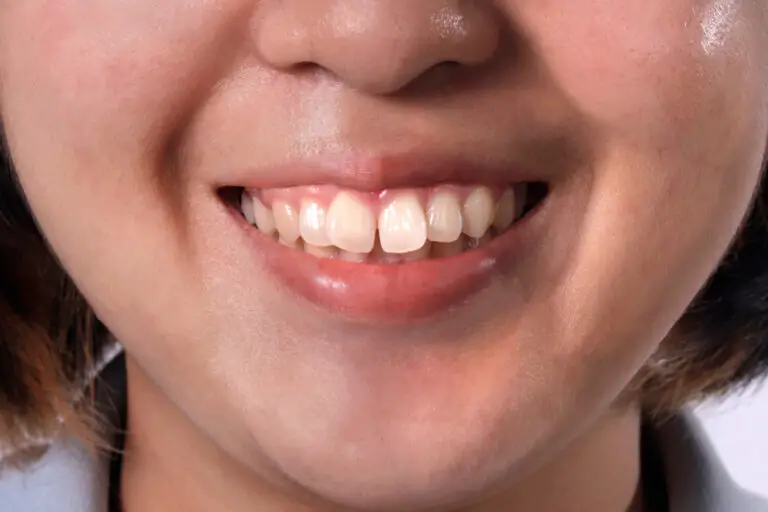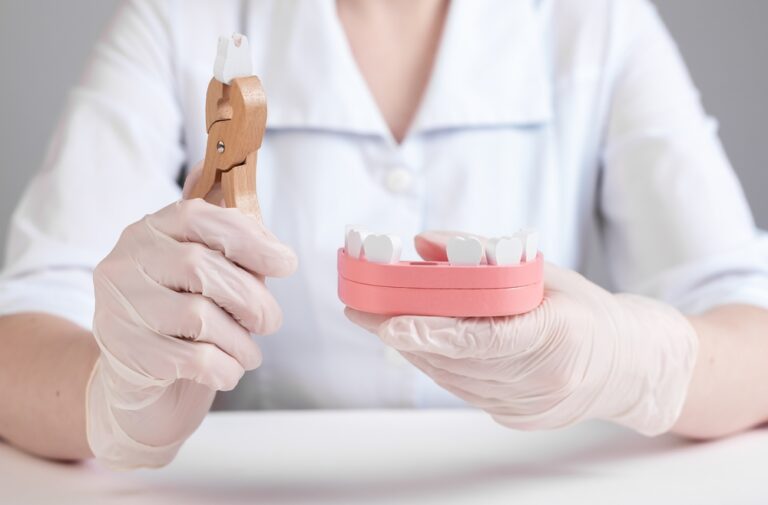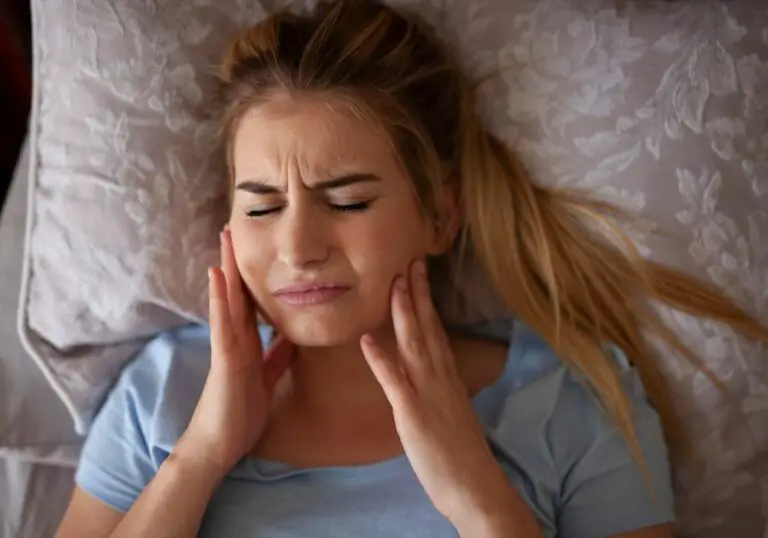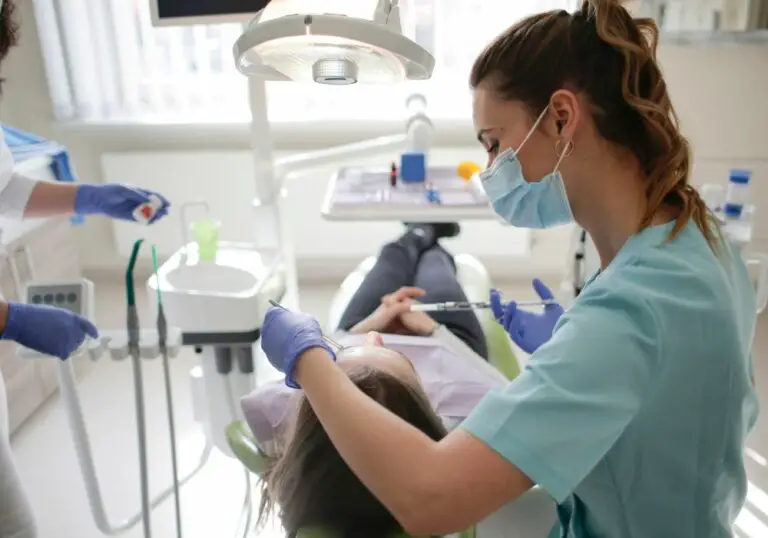Deer stand out from other grazing animals due to their conspicuous lack of upper front teeth. When you look at a deer’s face, you’ll notice the absence of prominent front incisors in the upper jaw. In place of those teeth is a tough pad of tissue consisting of skin, connective fibers, cartilage and fat. This unique configuration leads to obvious questions about how and why deer evolved without upper incisors and the anatomical mechanisms that allow them to effectively consume an herbivorous diet. In this in-depth article, we will unpack the evolutionary history, specialized adaptations, feeding behaviors, and dietary patterns that allow deer to thrive without upper front teeth.
The Step-by-Step Loss of Upper Teeth Through Deer Evolution
The dental anatomy of early deer-like mammals
Deer belong to the mammalian order Artiodactyla, characterized by a four-chambered stomach, hooved feet, and symmetrical cleft toes. The earliest artiodactyls emerged around 60 million years ago, evolving from small omnivorous mammals into larger herbivorous forms over millions of years. Approximately 35 million years ago, the first primitive deer-like species appeared, with anatomical adaptations for grazing and browsing.
These early deer ancestors had a full set of incisors, canines, premolars and molars in both upper and lower jaws, adapted for an omnivorous diet. The upper incisors were vertically oriented, chisel-shaped teeth at the front of the jaw used for scraping, cutting, gripping, and tearing plant matter.
The loss of upper canine teeth
Paleontologists have traced the gradual loss of upper teeth in deer ancestors across evolutionary timelines using fossil evidence. The first dental structures lost were the upper canines about 20 million years ago. These saber-like teeth were no longer advantageous as deer evolved into dedicated herbivores. Losing the upper canines reduced weight in the upper jaw and freed space for the muscular tongue.
Disappearance of upper incisors
Around 15 million years ago in Miocene deer species, the upper incisors began to reduce and disappear. With no need to capture or tear prey, the role of incisors diminished. Grasses could be adequately gripped and torn by the lower incisors alone. Natural selection favored deer with smaller upper incisors over successive generations until the teeth were lost altogether.
Advantages of losing upper front teeth
While seemingly counterintuitive, the loss of upper front teeth conveyed several advantages:
- Lightweight skull – With no upper incisors or canines, the maxilla bones of the upper jaw became lighter and thinner. This reduced muscular strain required to lift the head for feeding.
- Even tooth wear – Upper incisors are close to the grinding surface and can wear down unevenly. Losing them prevented uneven wear.
- Less bone remodeling – No need to maintain bony sockets and roots for the upper incisors. Saved metabolic resources.
- Injury prevention – Upper incisors are prone to fractures and breaks. Losing them prevented dental injuries.
- Clear field of vision – Deer have a clearer downward field of view without protruding upper teeth. Helps detect predators.
The rise of deer and radiation into new niches
Rather than impeding them, the loss of upper incisors and canines allowed deer to diversify andradiate into new ecological niches as highly successful herbivores. Starting around 5 million years ago, deer underwent an evolutionary radiation to fill forest, grassland, and tundra niches across North America, Europe, Asia and the Americas. Today over 90 different deer species inhabit diverse biomes and geographies worldwide. The lack of upper front teeth is a shared ancestral trait across all living deer species that evolved in parallel with their remarkable diversification.
Physical Adaptations that Compensate for Missing Upper Teeth
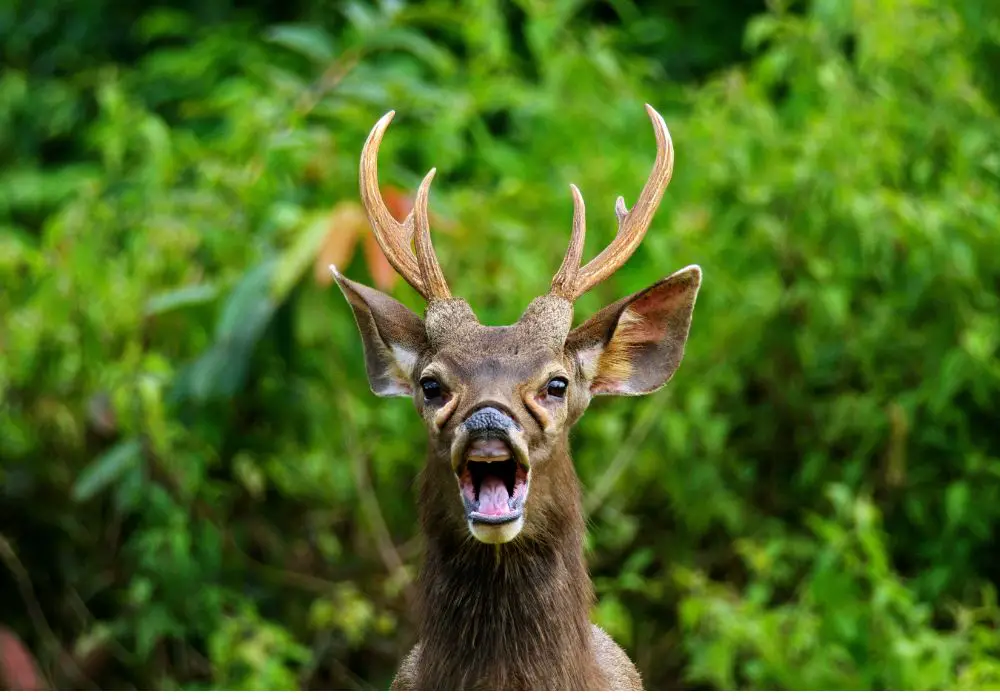
1. Modifications of mouthparts
To grasp and consume plant matter without upper incisors, deer evolved several specialized physical adaptations:
- Prehensile lips – Deer have highly mobile, muscular lips capable of grasping and pulling in vegetation.
- Lower incisors – The biting and tearing functions of upper incisors were transferred to lower incisors which are sharply chisel-shaped.
- Molar teeth – Broad ridged molars with enamel folds are ideal for grinding up fibrous plant material.
- Tongue – A large, strong tongue assists in manipulating food in the mouth.
- Salivary glands – Abundant serous and mucous saliva helps soften and bind plant matter for swallowing.
2. The unique upper dental pad
In place of upper incisors, deer have a specialized cushion of tissue including:
- Epithelium – The outer layer of skin cells. Provides a smooth, tough surface.
- Lamina propria – A layer of dense connective tissue reinforced with collagen fibers. Provides structure.
- Submucosa – More loosely organized connective tissue containing nerves and vessels.
- Elastic cartilage – Gives firmness and support to the pad. Allows some flexibility.
- Adipose tissue – Pockets of fat cells provide insulation and cushioning.
This dental pad protects underlying bone while assisting in the manipulation and shearing of plant foods between the pad and lower teeth. The tissues are tightly bound to resist tearing or separating during feeding.
Benefits of the dental pad configuration
Compared to incisors, the upper dental pad has many mechanical advantages:
- Withstands constant abrasion from grit on plants
- Does not overgrow or require filing down
- Simpler nerve and blood supply
- Easier maintenance of epithelial cells
- Provides insulation and warmth for the nasal region
- Functions well for deer’s herbivorous grazing lifestyle
- Reduced risk of dental fractures
Overall, the upper pad has superior functionality and survivability compared to upper incisors given the herbivorous dietary niche of deer.
Masterful Feeding Behaviors in the Absence of Upper Teeth
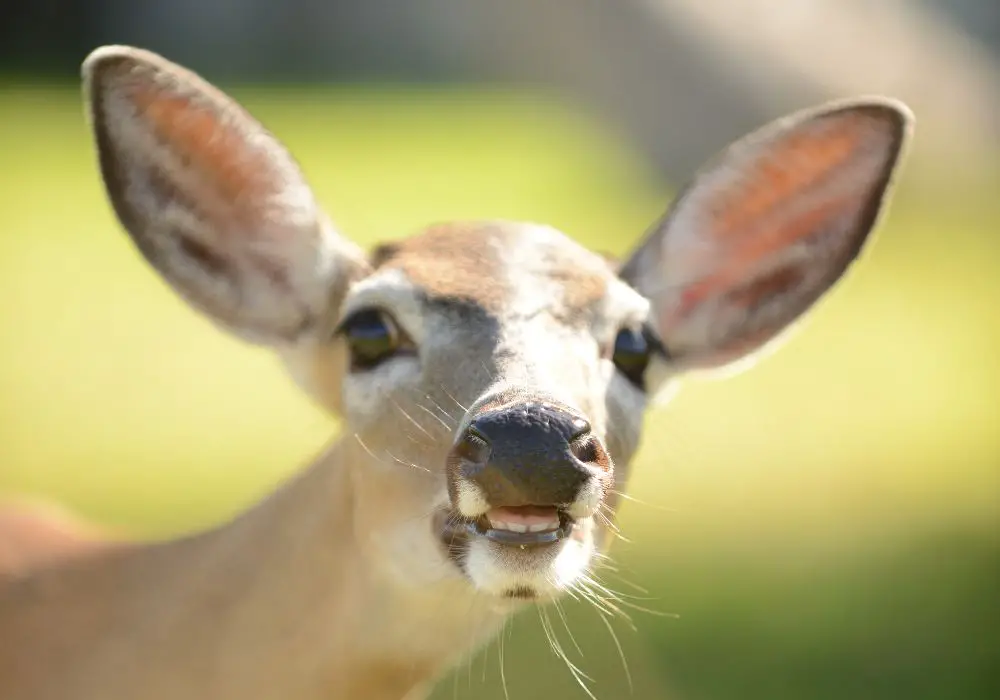
1. Specialized grazing motions
Deer use modified ingestive behaviors to consume plants without upper incisors:
- Grasping – They firmly grip bunches of grass or other vegetation between their lower teeth and dental pad. Their prehensile lips assist in this grasping motion.
- Pulling – They clench down and retract their head to pull plants loose in a jerking motion.
- Twisting – Twisting motions help sheer woody stems or remove seed heads.
- Wrenching – Hard foods like acorns are tightened against the upper pad and wrenched free.
- Tearing – Leaves are partially torn before chewing using the specialized motions above.
2. Chewing motions and mastication
Once food is secured in their mouth, deer chew using lateral movements of the lower jaw. The temporal and masseter muscles enables sideways grinding of plant matter between upper and lower molars. Minimal jaw motion is required since deer do not need to chew vertically with incisors.
3. Swallowing and digestion mechanisms
Their tongue and saliva assist in swallowing pulverized food. It passes down the esophagus and into the 4-chambered stomach where microbial fermentation breaks down cellulose. The stomach chambers work sequentially to digest the fibrous meal. These digestive adaptations compensate for the lack of incisor processing.
4. Feeding rates and intensities
Due to their specialized grazing methods and digestive system, deer can achieve high hourly feeding rates similar to levels seen in other grazing animals with upper incisors. Estimated dry matter intake rates:
- White-tailed deer: Up to 1.8 pounds/hour
- Mule deer: Over 2 pounds/hour when maximally feeding
- Moose: Up to 4.5 pounds/hour
These high intake rates during active feeding periods help deer meet their nutritional demands.
Diverse Foraging Patterns Sustain Deer Throughout the Year
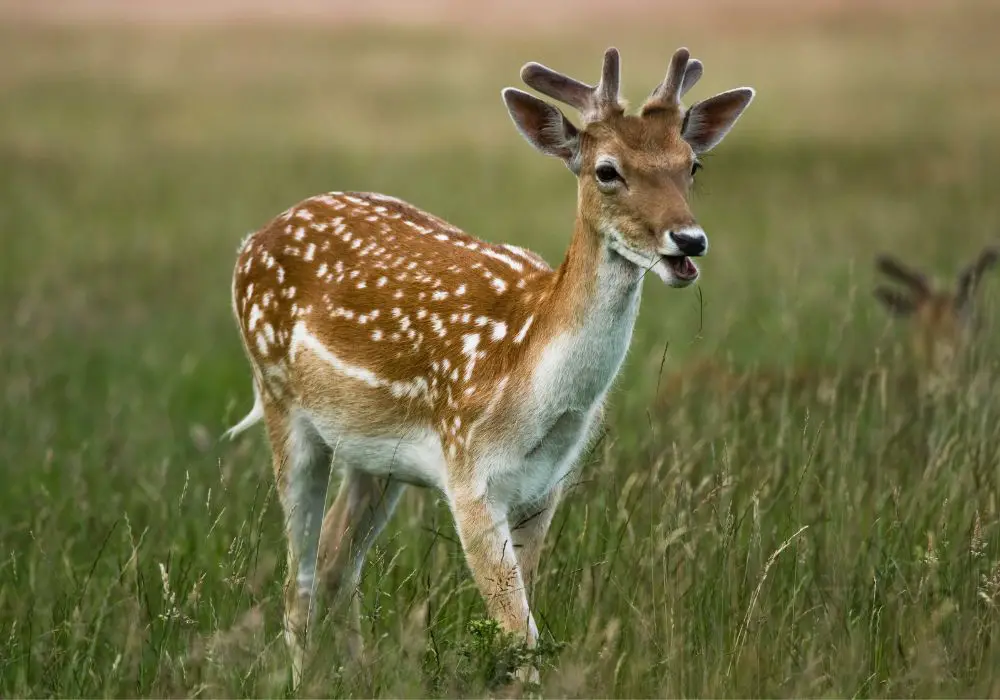
Annual dietary composition
Deer consume a wide variety of plant matter throughout the year:
| Food Item | Percentage of Annual Diet |
|---|---|
| Grasses | 40-60% |
| Leaves and twigs | 20-40% |
| Fruits and nuts | Variable |
| Fungi | 5-20% |
| Lichens | 1-5% |
Spring diet – Budburst and new growth
Spring marks a time of plentiful shoots, leaves, grasses and flowering plants:
- Grasses – Cool-season grasses grow vigorously. Deer avidly graze emerging blades and seed heads.
- Herbaceous plants – Deer browse on leaves, stems, vines. Favourites include clover and vetch.
- Twigs – Trees and shrubs put out nutritious shoots and leaves. Deer delicately pluck these.
- Fruits – Berries, currants, and tree fruits provide sugars.
Summer diet – Peak abundance
Summertime allows deer to be more selective in their browsing:
- Grasses and sedges – Deer shift to grazing on warm-season prairie grasses.
- Leaves and herbs – Broadleaf plants, forbs and legumes continue to be important.
- Fruits – Berries, apples, mangoes and citrus fruits are consumed where available.
- Mushrooms – Fungi and mushrooms fruit in warmer wet weather.
Fall diet – Fattening up
Fall is a critical period for deer to store fat and gain nutrition before scarce winter months:
- Acorns/nuts – Deer feed heavily on acorns, chestnuts, hazelnuts and walnuts. These are rich in carbs and oils.
- Grains – Deer supplement their diet with wheat, rye, corn and other agricultural grains.
- Leaves – They continue browsing available green leaves before leaf drop.
- Fruits – Apples, berries, rose hips and other fruits are sought out.
Winter diet – Seeking sustenance
Pickings are slimmer in the winter, requiring deer to adapt their food sources:
- Woody browse – Bark, twigs, small stems and conifer needles provide sustenance.
- Lichens – These dried shelf fungi are pulled off trees or scraped from the ground.
- Conserved hay – Deer will graze livestock haystacks and silage.
- Grains – Deer consume more agricultural grains left in fields.
- Hems and buds – Dormant tree buds and rhizome tips offer some greens.
Supplemental foods
In addition to natural vegetation, deer take advantage of supplemental foods:
- Livestock feed – Pellets, grains, and hay provided for livestock are pilfered.
- Crop residues – Leftover corn stalks, chaff, beet tops, and an array of post-harvest waste.
- Ornamentals – Deer are notorious for grazing flowers, garden veggies, and landscape shrubs.
- Birdseed – Concentrated, high-fat blends attract deer.
Overall deer exhibit remarkable adaptability and seasonal variation in their feeding habits. The lack of upper incisors does not substantially limit food options throughout the year.
Frequently Asked Questions
How do deer mothers nurse fawns without upper incisors?
Deer rely on their prehensile lips to draw the nipple into their mouth when nursing. Milk can then be extracted using suction and pumped directly into their lower tooth region. Having upper incisors is not essential for nursing offspring.
Do deer have more trouble chewing or difficulties swallowing food?
Deer effectively grind up vegetation between lower teeth and the broad upper molars. Their muscular tongue and saliva help manipulate swallowed food down smoothly. The 4-chambered stomach also aids digestion. Overall, deer do not appear to have impaired chewing or swallowing.
Why don’t other grazing animals have lost their upper teeth like deer?
Most grazing mammals like cattle, sheep, llamas and horses have retained upper incisors to assist biting off grass and plants. Goats and camels use their upper incisors for browsing on twigs. Thus for most species, upper incisors still provide an evolutionary advantage related to their specific feeding ecology.
Could deer ever re-evolve upper incisors if their diet changed drastically?
It’s unlikely deer would re-evolve upper incisors barring a major shift to a browsing diet requiring more biting strength, which goes against their evolutionary trajectory. However, over thousands or millions of years, significant habitat changes could potentially lead to new dental adaptations.
Why don’t deer have problems with upper lip injuries without incisors?
The upper dental pad is adapted to withstand abrasion from vegetation. The dense connective tissue and fat protect sensitive nerves and tissues from damage. Fast healing epithelial cells also prevent gaps or lesions. Overall, the upper lip is well equipped to function without incisors.
Conclusion
The lack of upper incisors in deer and their relatives is a fascinating evolutionary phenomenon, unique among hooved mammals. While this missing dental hardware may seem disadvantageous, deer have thrived by evolving an array of compensatory feeding mechanisms. From their specialized grasping lips and dextrous tongues, to the uniquely shaped upper dental pad, deer exhibit exquisite adaptations enabling them to feast on a diverse plant diet. Their flexible grazing behaviors and seasonal diet shifting allow deer to exploit a wide variety of vegetation across habitats and climates. The next time you spot a deer munching leaves in your garden, take a moment to admire the remarkable way these creatures have adapted to effectively eat without upper front teeth.

